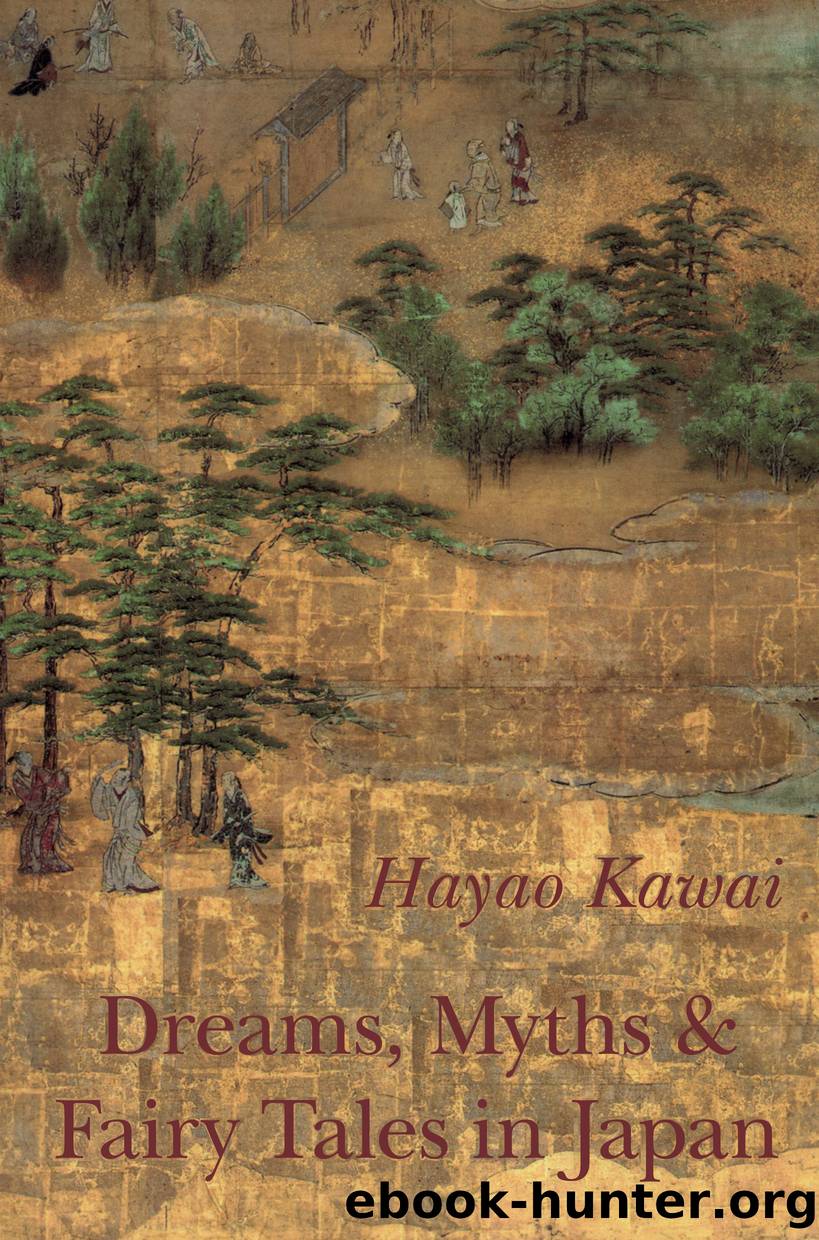Dreams, Myths and Fairy Tales in Japan by Hayao Kawai

Author:Hayao Kawai
Language: eng
Format: epub
Publisher: Daimon
Published: 2020-04-20T06:23:08+00:00
6. The Repetition of Balancing Movements
Throughout the mythology of Japan, one is impressed by the fact that a basic story is retold again and again with only subtle changes. I feel that this is indicative of an attempt to maintain a fine balance between various pairs of opposites. This occurs throughout the historical periods described in the Kojiki. One can say that this continues in Japan even today. But before going on to examine the contemporary situation, I would like to present some examples from the Kojiki.
The conflict between the Sun Goddess and the Storm God is actually a kind of repetition of the drama which unfolded between their parents. Their mother, Izanami, dies in the fire to which she herself had given birth. Their father, Izanagi, goes down to the underworld to bring her back, but when he meets his wife she asks him not to look at her while she is negotiating with the gods of the underworld. In spite of the promise which he made to her, he lights up the darkness of the underworld. He then sees that his wife is in a horrible state of disintegration – her body being infected with maggots and eight thundergods swarming within her. Frightened at the sight, he flees. His wife, who was also his sister, is enraged at being seen in such a shameful state and pursues him with the help of some old hags from the Land of Gloom.
The conflict between sister and brother, Izanami and Izanagi, carries over into the second generation of the Sun Goddess and the Storm God. This time, however, it is the male, the Storm God, who is violent. We can see that the roles of the sexes have been reversed. Whereas the male god Izanagi flees having seen the terrible state of his wife’s body, the female deity, the Sun Goddess, retires into a cave upon seeing her brother’s violent acts. It is highly significant that the same word is used in the Kojiki to describe the reaction of both Izanagi and the Sun Goddess to the sight which repels them. It is kashikomi, which means roughly “to be awed.” First Izanagi is awed by the truth which appeared out of the depths of female being. His daughter is in turn stricken with the same feeling of awe in confronting the strong violence lying at the depths of the male. In this way, the opposing pair of male and female balance each other.
After their confrontations, the respective pairs achieve a kind of balance. In the continuation of the first story, Izanami pursues her husband-brother to the pass leading from this world to the Land of Gloom and tells him that she will kill a thousand inhabitants of his land every day. To this he replies that he will build fifteen hundred child-bearing huts every day. Here we see a rather primitive and naive form of compromise.
In the case of the Sun Goddess and the Storm God, a much longer period is required to reach a resolution, but as we shall see, balance is achieved through true compromise.
Download
This site does not store any files on its server. We only index and link to content provided by other sites. Please contact the content providers to delete copyright contents if any and email us, we'll remove relevant links or contents immediately.
| Fairy Tales | Folklore |
| Mythology |
Confessions of an Ugly Stepsister by Gregory Maguire(7211)
Circe by Madeline Miller(6878)
Burn for You (Slow Burn Book 1) by J.T. Geissinger(6428)
A Court of Wings and Ruin by Sarah J. Maas(6099)
A Lesson in Thorns (Thornchapel Book 1) by Sierra Simone(4590)
The Bird and the Sword by Amy Harmon(4411)
Into the Drowning Deep by Mira Grant(3872)
Stolen (Alpha's Control Book 1) by Addison Cain(3751)
The Queen and the Cure (The Bird and the Sword Chronicles Book 2) by Amy Harmon(3422)
Mythology by Edith Hamilton(3280)
Pernicious Red (When The Wicked Play Book 1) by Natalie Bennett(3154)
Run Little Wolf (The Forest Pack Series Book 1) by G. Bailey(3060)
The Queen and the Cure by Amy Harmon(2685)
Lost Boy by Christina Henry(2427)
(Maiden Lane #5) Lord of Darkness by Elizabeth Hoyt(2409)
Mythos by Stephen Fry(2372)
The Fairy Queen (The Dark Queens Book 6) by Jovee Winters(2347)
Persephone by Kitty Thomas(2216)
(Night Walker) by Lisa Kessler(1793)
